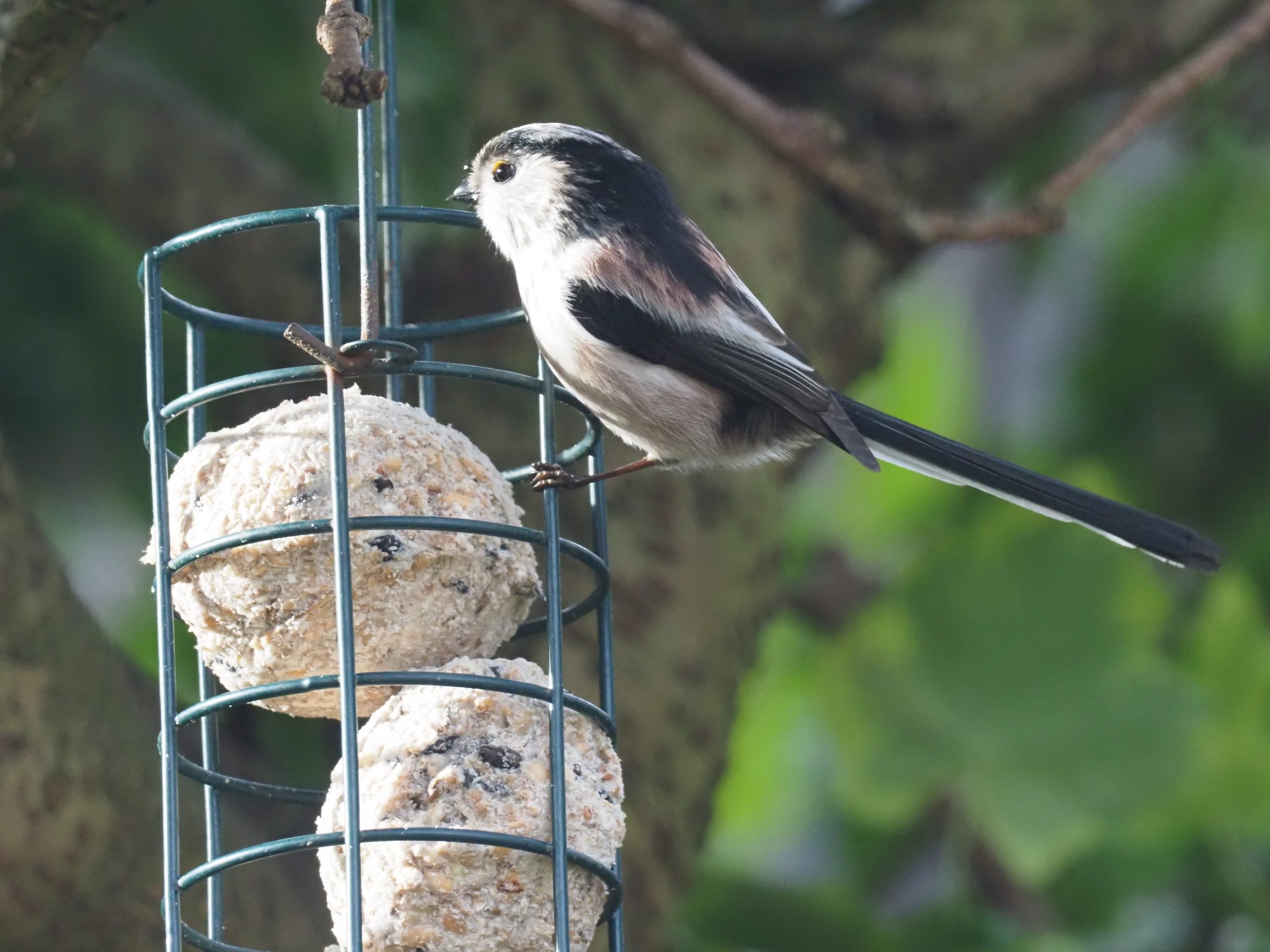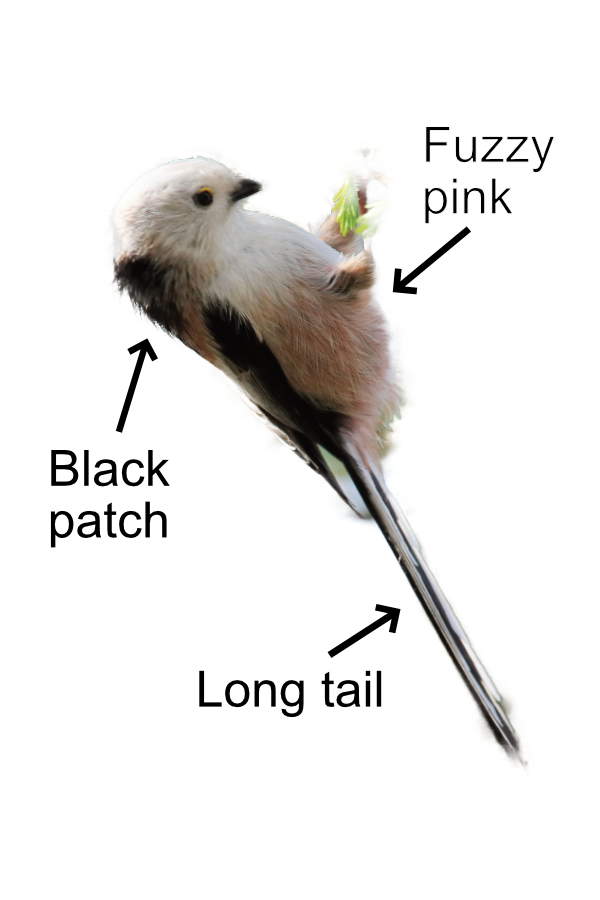
Long-tailed Tits are only distantly related to other Tits. Their Latin name means ‘tailed titmouse’ which sums up being a 'fuzz ball on a long stick' superbly! Pinkish brown above, pinkish white below with black marks on the side of their head and a white crown. Their tail has some white outer feathers to jazz the plain wings up a bit. Altogether, they are 14cm long of which 9cm is that very long tail. Image having a tail two-thirds of your total body length.

Long-tailed Tits move about in a sociable troop, singing their “Si-Si-Si” song as they fly in single file along the hedgerow. In the winter, they pick up other birds into their gang as they whizz along, as being polite and sociable is their thing. They love calling to each other and rarely shut up, always needing the reassurance of another Long-tailed Tit close by.
They are restless and acrobatic as they feed among the trees and bushes, often hanging upside down while munching on insects, spiders and seeds. They will go on garden feeders, but only if there is a good bush nearby for their mates to wait in.
The Long-tailed Tit does a showing off butterfly display flight in spring to attract a mate before they build beautiful domed nests from moss, lichen, and spiders' webs. They line the nest with as many as 1,500 feathers to make it super soft. They are the real wizards of nest building. The most magical part is that their cute homes are elastic and expand as the youngsters get bigger inside. The nests are built in early April and the female lays up to 12 eggs which hatch after 15 days and are ready to join the troop 14 days later once they have learnt the “Si-Si-Si” song off by heart. Other Long-tailed Tits may help feed the youngsters. With these birds, it is all about family.
Being so small, cold winters can be deadly, though they generally recover numbers quickly. To conserve body heat, they cuddle up together on a branch at night, taking it in turns to be the cold one at the end.
There are about 120,000 Long-tailed Tits in the British Isles and, like other tits, they don’t move about much, keeping to their local patch. Their Latin name is ‘aegithalos caudatus’ (‘aegithalos’ means ‘titmouse’ and ‘caudatus’ means ‘tailed’).